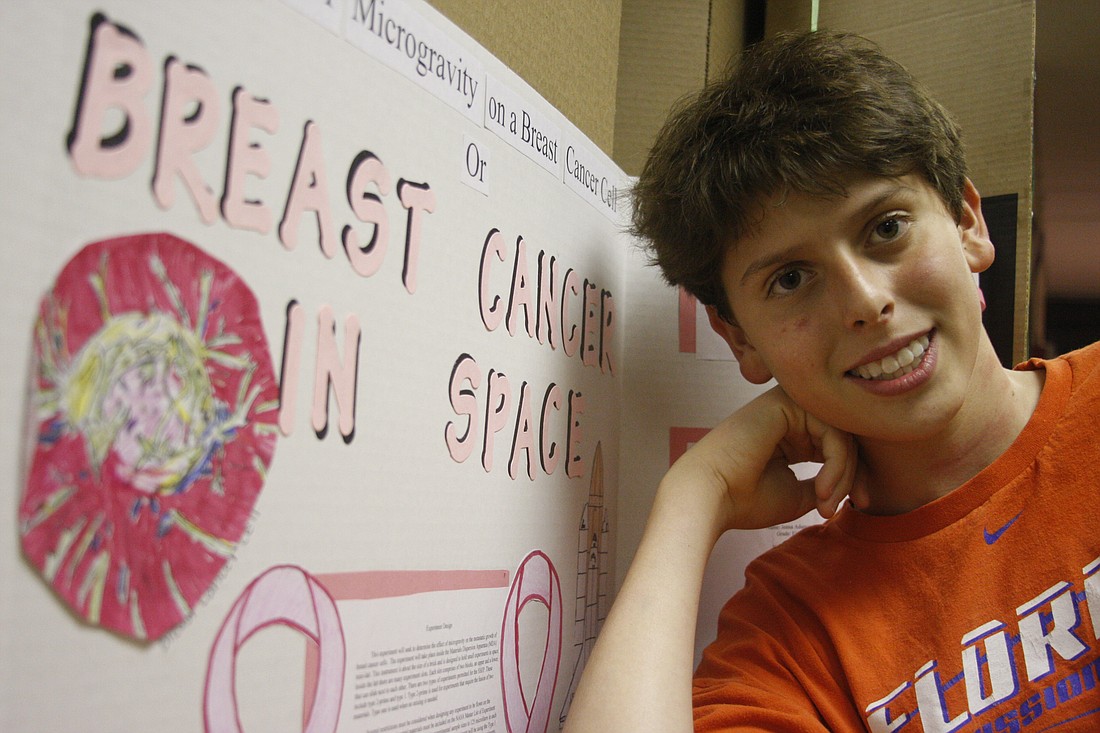- July 26, 2024
-
-
Loading

Loading

What happens when you mix microgravity with rainbow trout eggs or alfalfa sprouts?
These are just two of the science experiments from Maitland Middle School students that are being considered for a coveted spot aboard the last flight of the Space Shuttle Endeavour, scheduled for February. Winners will be selected Nov. 22-25.
An anonymous donor paid the $15,000 fee so that the school can participate in The Student Spaceflight Experiments Program.
At Maitland Middle School’s Jupiter Jubilee open house on Nov. 4, three semi-finalists were chosen to compete with Glenridge Middle School’s semi-finalists. The prize — the opportunity to be a part of NASA history.
“You never know what’s going to turn a kid on to science, but this gives them the experience of working on a real-life project and working with real scientists,” said Lynn Mederos, eighth grade science teacher at Maitland Middle School.
“My kids have lit up like firecrackers over this.”
Breast cancer cells
Students were asked to propose an experiment that would explore the effects of microgravity during a 10-day period on small amounts of fluid in either one test tube or in two test tubes, which would be combined by astronauts soon after launch. The same experiments will occur on Earth.
The team, made up of Sam Bogle, Baron Hahn and eight other eighth grade classmates, is a semi-finalist. They hope to research the effects of microgravity on breast cancer cells.
Bogle, the team leader, said they chose breast cancer because it’s touched many of their lives.
“We chose this because we wanted to focus on something that could save someone’s life someday,” Hahn said.
They want to investigate whether breast cancer cells spread less quickly in zero gravity.
“… Maybe one day patients can be sent up into zero gravity for better treatment,” Hahn said.
Microencapsulation
Another semi-finalist from Maitland Middle is the one-girl team of eighth-grader Jamie Fox. She researched her proposal all on her own, focusing on the affects of microgravity on the encapsulation of cisplatinum — a platinum-based chemotherapy drug used to treat various types of cancers.
On the list of possible experiments, microencapsulation immediately caught her eye.
“… I’m really interested in cancer and finding healthier treatments for cancer,” she said.
Fox’s experiment will observe the microencapsulation of the chemotherapy drug cisplatinum with poppy seed oil, a common delivery vehicle for cancer treatment.
The program
The Student Spaceflight Experiments Program is a national Science, Technology, Engineering, and Mathematics (STEM) education initiative that provides middle and high school classes the ability to propose experiments to fly in low Earth orbit and is a program of the National Center of Earth and Space Science Education (NCESSE).
Lynn Mederos thinks the big picture of this project is the most important — getting kids interested in science.
“For a 14-year-old eighth-grader to want to come in during other classes and even stay after school to work on this is incredible,” Mederos said.
Mederos said the step-by-step research projects have been a great experience for the students.
“When that shuttle goes off in February, a little piece of their hearts will go with it too.”